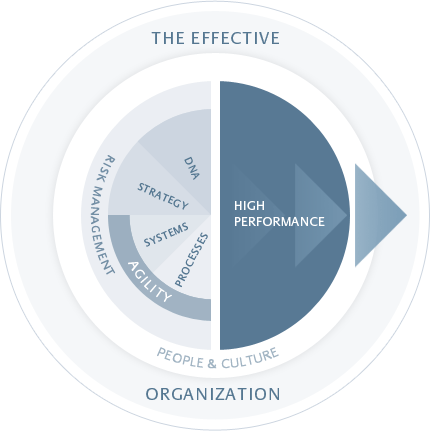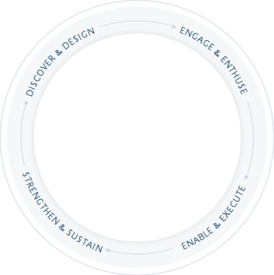Enabling your Organization to respond rapidly
to Changes in the Business Environment.
Agility
Simply put, Agility can best be compared with an Olympic relay race, one of the most fast-paced, energetic and exciting disciplines. One misstep in a relatively short sprint race or a mistake in handing over the baton can make the difference between a gold medal and no medal at all. For a relay team that is aiming for gold, synchronization of every single move, quick reaction to opportunities and effective delivery during the race are vital. This can only be accomplished with careful preparation, training and high motivation of each individual team member, guided by a brilliant strategy with a clear goal; this includes the ability to predict and adapt to changes before or during the race.
The pace of change and complexity in today’s business environment has increased so much that it is no longer sufficient for an organization to just react quickly to changes. To react involves driving immediate actions, being controlled only by circumstances. Such actions are short-term focused and deal with symptoms, not with root causes. However, to maintain its thriving business in the long-term, an organization needs to be agile, i.e. it needs to be able to respond rapidly, pro-actively and effectively to changes. Note the distinction. To respond involves acting with speed, but in a reasonable and appropriate manner after analysing and thinking through the situation, considering options and likely outcomes and choosing the best, before acting. This often requires innovation and new ways of working. In turn, responses will almost always get you through the situation much faster, with fewer resources and let you achieve more in the long-term. For any organization that seeks to be high-performing and effective this means that it is not enough to cultivate a stable Corporate DNA and introduce a brilliant Strategy; it must continually improve its Organizational Agility, too.
Initiatives to improve Organizational Agility either focus on incremental improvements (‘Developmental Change’), on replacement by something completely new (‘Transitional Change’), or on a radical, organization-wide shift in business and culture (‘Transformational Change’). This can in turn either be to expand, improve, optimize or replace existing systems or processes, to introduce completely new systems or processes, or both. Examples include:
Systems:
- Business Model review or innovation
- Organizational review and design
- Implementation, standardization, centralization or optimization of Management and Control systems
- Implementation, standardization, centralization or optimization of IT systems
Processes:
- (Lean) Supply Chain Optimization
- Standardization, centralization or optimization of processes
- Embedding Continuous Improvement
- Introduction of Lean Management & 6 Sigma
Experience shows, that many of these initiatives require substantial changes in ways of working and behaviours, which often are not appropriately addressed.
We work with our clients to build and embed the capabilities for their organizations to respond rapidly to changes in their business environment. We do this by effectively facilitating the change aspect which ensures that the initiative lifts an organization’s Agility on Olympic levels. It delivers the expected outcomes and results, and at the same time it equips the organization with proven tools, methodologies and techniques to sustain them – and continually improve.
The Effective High-Performance Organization =
(Corporate DNA + Strategy + Agility) x Risk Management
x People & Culture

